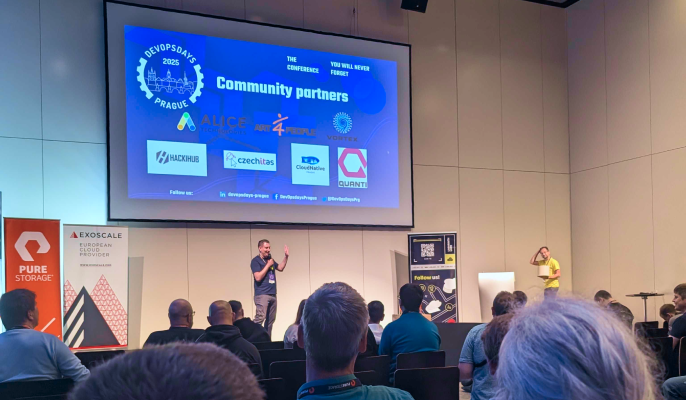Innovation and sharing experiences are of great interest to us at Quanti, so we couldn't miss one of the biggest events in the world VueJS — the conference VueJS Amsterdam 2025. The event was full of inspiration, new contacts and valuable insights.
Why VueJS Amsterdam?
One of the main attractions of VueJS Amsterdam is without a doubt the opportunity to meet the creators of the frameworks and tools themselvesthat we use every day.
Imagine having the opportunity to ask Daniel Roe, the lead developer of NuxtJS, about the direction of this increasingly popular framework. Or the authors of libraries from the VueJS ecosystem on the correct use of the tools they have created.
These informal interactions are invaluable and allow for a deeper understanding of technological decisions and future directions.
Know how & Inspiration
Discussions about real-life experiences of deploying different frameworks, libraries and architectures were extremely rewarding. We investigated what best practices work in other projects, what challenges they face in companies in nearby countries and how they solve them. It is this exchange of know-how that is invaluable at conferences like this and helps us continually improve our own practices at Quanti.
At this conference, the lectures are all in one hall, the so-called single-track. I like that because you can do everything you've been looking forward to. It also promotes a relaxed atmosphere of the conference, there is no need to rush somewhere for lectures in another track.
What moves the current world of JavaScript
Several of the lectures particularly interested me and brought interesting insights into current events in the world of JavaScript:
Web Fragments
This technology represents an interesting approach to modernizing and scaling front-end applications. Particularly gratifying is the effort to replace proprietary solutions with Web standards.
Works by Void (0)
The company, which is also the creator of VueJS and Vite - Evan You, focuses on building modern and versatile tooling for JavaScript. Their projects such as Vite, Vitest and Rolldown have the potential to unify and streamline developer workflow across different frameworks.
UnJS Ecosystem
Pooya Parsa, creator and leader of UnJS, introduced this growing ecosystem that also powers NuxtJS 3. Emphasis on Reusable and versatile tools within UNJs is very inspiring and points the way to more modular and efficient development.
Modern data-fetching libraries
Interesting approaches to asynchronous state management have been mentioned, such as Pinia Colada or RStore. These libraries can improve the user experience (UX) in web applications while also improving the work of developers to improve their developer experience (DX).
First-hand tools: Sentry, Storyblok and Vueform
There were also sponsors at the conference, I had fun with people from Sentra, Storyblok and the new company Vueform.
Again, it's great to be able to discuss the specific features of their products directly with the people behind them.
Vue and Nuxt: Kings of Pragmatic Evolution
The VueJS Amsterdam conference confirmed why they are NuxtJS and VueJS such popular and pragmatic frameworks.
Theirs versatility, the ability to adapt to the different needs of developers, and the rich ecosystem of modules make them a great choice for a wide range of projects.
Continuous development and innovation, such as Vapor Mode in VueJS, show that these technologies have a promising future ahead of them.
If you are also thinking about developing a web application using modern JavaScript frameworks, do not hesitate to contact us.
We will be happy to discuss your options with you and suggest the best solution for your project.


.svg)







